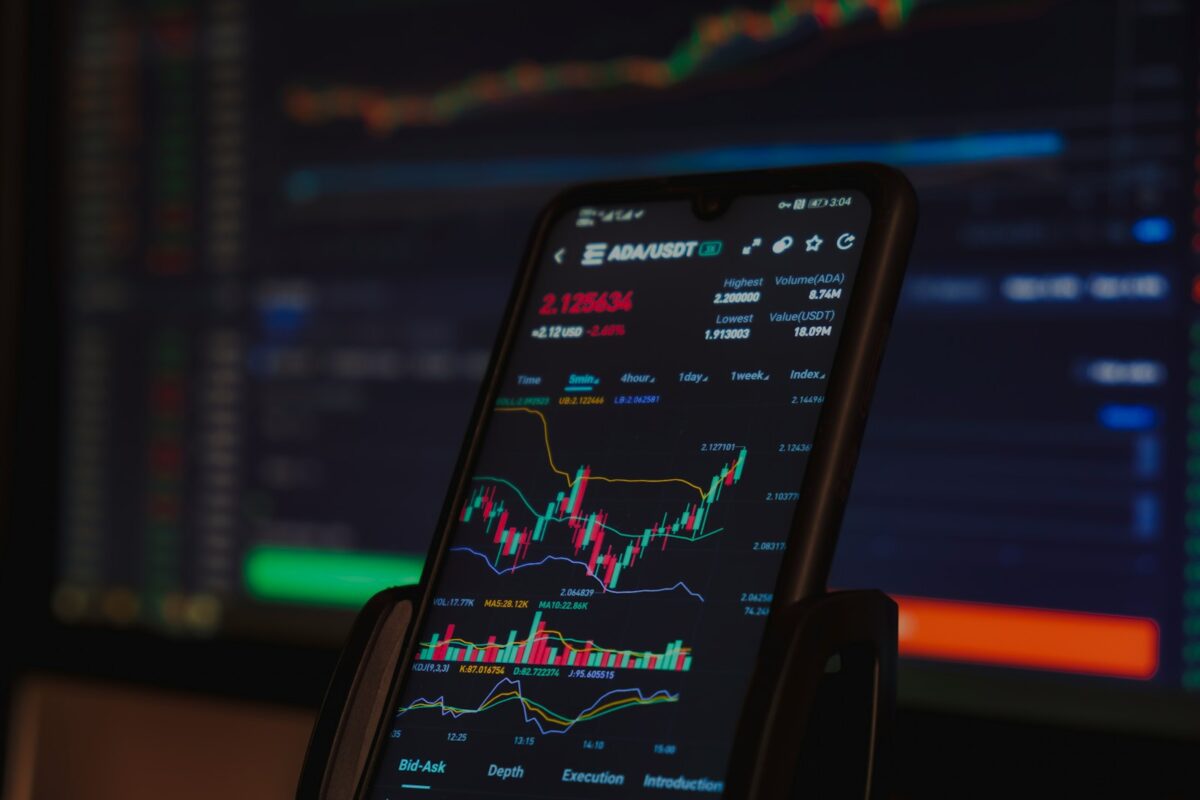
Short term trading basics

Engaging in rapid market maneuvers demands precise allocation of time and mental energy. Unlike extended investment horizons, these approaches require active observation within hours or days, often categorized as intraday or swing strategies. The commitment to monitor price fluctuations closely can yield opportunities but also increases exposure to volatility-induced uncertainty.
Mastering the essentials involves understanding specific intervals where profit potential aligns with manageable uncertainty. Intraday methods focus on positions opened and closed during a single session, minimizing overnight risk but demanding swift decision-making. Swing techniques extend this window to several days, balancing patience with agility while navigating evolving market conditions.
Risk management stands at the core of short-duration engagements. Setting clear entry and exit points coupled with stop-loss orders preserves capital against abrupt adverse movements. Traders must quantify acceptable loss thresholds relative to their portfolio size before initiating transactions, maintaining discipline throughout fluctuating market rhythms.
Fundamentals of Rapid Market Engagement
Effective execution within condensed market intervals demands precise analysis combined with disciplined commitment. Traders focusing on these abbreviated cycles must develop strategies that leverage volatile price movements while managing inherent risk. The ability to identify entry and exit points swiftly, often within the same session or a few days, differentiates successful practitioners from those exposed to excessive loss.
Understanding the dynamics of momentum shifts and volume fluctuations is critical. Technical indicators such as moving averages, Relative Strength Index (RSI), and Bollinger Bands provide quantifiable insights into potential reversals or continuations. Utilizing these tools in conjunction with chart pattern recognition enables participants to formulate hypotheses about imminent price behavior, facilitating informed decision-making during limited time horizons.
Key Components of Accelerated Market Strategies
One pivotal aspect lies in balancing opportunity against exposure duration. Unlike extended investment approaches, where positions may be held for months or years, this method prioritizes rapid turnover aligned with short-lived trends or swings. This necessitates continuous monitoring and readiness to adjust positions promptly as new data emerge.
Risk management protocols assume heightened importance due to amplified volatility over compressed periods. Position sizing must reflect tolerance levels calibrated through historical drawdown analyses and simulated stress tests. Stop-loss orders serve as crucial safeguards, limiting downside impacts when market conditions deviate unexpectedly from initial projections.
- Swing movements: Capitalizing on intermediate price oscillations occurring over days rather than hours or months.
- Intraday fluctuations: Exploiting intra-session volatility requiring immediate reaction and execution efficiency.
- Time-sensitive signals: Employing algorithmic triggers based on predefined technical criteria for swift trade initiation.
The temporal nature of such engagement demands a psychological readiness to accept frequent smaller gains instead of waiting for substantial appreciation. This mindset shift reflects an experimental approach where numerous trials refine strategy parameters continuously through feedback loops derived from performance metrics.
This methodology encourages continuous learning by testing hypotheses against live market conditions, observing outcomes without emotional bias. It also invites practitioners to investigate correlations between various technical factors across different assets and trading intervals, fostering deeper understanding of underlying market mechanics at play during accelerated transaction cycles.
The combination of empirical research techniques with applied analytics provides a robust foundation for navigating rapid financial environments confidently. By embracing iterative experimentation grounded in quantitative evidence, participants can progressively enhance their proficiency in exploiting transient opportunities while maintaining structural discipline essential for long-term sustainability within fast-paced marketplaces.
Choosing Suitable Trading Instruments
Selecting appropriate instruments for brief market involvement requires prioritizing assets with clear volatility patterns and predictable liquidity. Instruments with frequent price fluctuations within a single day enable active positions to capitalize on intraday momentum, while those exhibiting cyclical movements over several days suit strategies based on oscillating trends. Time allocation is critical: the more limited the holding period, the more responsive and liquid the instrument must be to justify operational commitment.
Risk management aligns closely with instrument selection. Highly volatile assets can produce rapid gains but also expose traders to sudden adverse moves, demanding rigorous stop-loss discipline and position sizing. Conversely, low-volatility instruments may offer steadier price action but less pronounced opportunities for swift profit capture during condensed intervals. Analyzing historical volatility indices and trading volume data provides empirical guidance in balancing these trade-offs.
Technical Characteristics and Their Impact on Strategy
Day-focused operations benefit from markets that maintain consistent intra-session volume peaks, such as certain cryptocurrency pairs like BTC/USD or ETH/USD, which display significant activity across multiple time zones. Volume profiles reveal optimal entry windows when bid-ask spreads narrow and slippage risk diminishes. For swing-style engagement spanning several days, instruments showing established support and resistance levels with periodic retracements–like major forex pairs or select altcoins–offer fertile ground for pattern-based approaches.
Commitment to monitoring frequency differs across instrument types. Rapid tick-to-tick changes necessitate continuous attention during active hours, often supported by algorithmic alerts or real-time charting tools. Meanwhile, instruments suited to longer cycles allow more spaced observation intervals without sacrificing opportunity identification. This temporal aspect influences both psychological endurance and the technical infrastructure required for efficient execution.
- Liquidity: Ensures fast order fills without significant price impact.
- Volatility: Defines potential reward relative to risk exposure.
- Spread tightness: Minimizes transactional costs crucial in high-frequency scenarios.
- Market hours compatibility: Aligns asset activity with trader availability.
Case studies underscore these principles: Bitcoin’s perpetual futures contracts exhibit consistent liquidity across global sessions, supporting multiple entries and exits per day with manageable spread costs. In contrast, smaller-cap tokens might demonstrate erratic spikes but suffer from low depth of book, increasing slippage risk during swift position adjustments. Careful backtesting of chosen assets using historical trade logs enables quantification of expected drawdowns versus average return per trade under various holding durations.
The intersection of time commitment and instrument attributes forms a foundational consideration in building operational routines optimized for concise investment horizons. Integrating quantitative metrics such as average true range (ATR), order book depth analysis, and volume-weighted average price (VWAP) comparison empowers traders to align asset selection tightly with their tactical preferences–whether focusing on rapid scalping maneuvers or slightly extended positioning within defined trend phases. Experimentation through simulated environments aids in refining these selections before live deployment, reducing unforeseen exposure to unpredictable market dynamics.
Setting Entry And Exit Points
Precise identification of entry and exit points relies on rigorous analysis of market behavior, particularly focusing on risk management and timing. For day or swing operations, one must evaluate volatility patterns and volume to establish levels where commitment aligns with acceptable risk thresholds. This involves setting stop-loss orders near support zones to limit downside exposure while targeting profit-taking points at resistance levels or anticipated reversal areas.
Effective decision-making integrates multiple timeframes, combining short-duration charts with broader perspectives to confirm trends. For instance, a trader might use 5-minute candlesticks for entry precision while monitoring hourly data for trend validation. This layered approach reduces false signals and enhances timing accuracy, ensuring that positions are initiated when the probability of favorable movement outweighs the potential risk within the chosen investment horizon.
Technical Considerations in Entry and Exit Strategy
The concept of commitment requires understanding the trade-off between risk and reward over a defined period. In swing operations spanning several days, adjustments to entry points may incorporate momentum indicators such as RSI or MACD to identify oversold or overbought conditions. Conversely, intraday moves benefit from real-time order book analysis and VWAP (Volume Weighted Average Price) metrics to detect liquidity pockets that influence optimal execution price.
An illustrative case study involves using Fibonacci retracement levels during a corrective pullback in a trending cryptocurrency. By entering near the 61.8% retracement with a tight stop just below the 78.6% level, traders can confine their risk while positioning for continuation moves confirmed by volume spikes. Exits then become dynamic targets adjusted based on evolving price action rather than fixed points, allowing adaptation to market flow without compromising discipline.
Managing Risk And Capital
Effective allocation of capital demands rigorous commitment to predetermined risk limits. Establishing a maximum percentage of capital exposed per position, often between 1-3%, protects the portfolio from disproportionate losses. This controlled exposure aligns with quantitative analysis methods that assess volatility and drawdown probabilities over specified investment intervals.
Time horizon directly influences risk management strategies. Positions held for brief durations require tighter stop-loss orders due to higher price fluctuations within condensed periods. Conversely, intermediate holding phases allow more flexible exit points but necessitate continuous monitoring through technical indicators like moving averages and Relative Strength Index (RSI) to evaluate momentum shifts.
Technical Analysis as a Risk Filter
Applying technical analysis tools enhances decision-making by identifying optimal entry and exit zones that minimize downside exposure. Chart patterns such as flags or pennants frequently signal consolidation before a price move, enabling anticipation of potential breakouts or reversals. Incorporating volume analysis alongside these patterns strengthens the reliability of signals, helping to differentiate false moves from genuine momentum swings.
Risk can be quantified using metrics like Value at Risk (VaR) or Conditional VaR, which estimate expected losses under normal market conditions within specified confidence intervals. Integrating these with trade setups improves capital allocation efficiency by balancing probable returns against adverse scenarios. For example, adjusting position size based on volatility-adjusted stop distances ensures consistent risk per trade regardless of asset price variability.
- Swing techniques: Targeting intermediate price movements requires vigilance in adapting stops as trends evolve.
- Commitment discipline: Avoiding overexposure during high volatility phases prevents rapid capital erosion.
- Time decay considerations: In options-related strategies, accounting for temporal value loss is critical for maintaining favorable risk profiles.
The experimental approach to managing financial exposure encourages ongoing refinement through backtesting different scenarios using historical data sets. By simulating various commitment levels and stop adjustments across multiple assets, traders gain insights into performance stability under diverse conditions. Such iterative investigation fosters confidence in tailoring strategies that accommodate individual risk tolerance and available capital resources.
This structured methodology invites deeper exploration into correlation effects among diversified holdings during volatile phases. Understanding inter-asset relationships helps mitigate aggregate portfolio risk beyond single-position controls. Pursuing this line of inquiry opens pathways toward sophisticated capital preservation mechanisms grounded in empirical evidence rather than conjecture.
Accurate Application of Technical Indicators in Active Market Engagements
Optimal utilization of technical indicators requires precise alignment with the chosen market rhythm–whether it involves intra-day dynamics or swing-based movements. For instance, oscillators like RSI and stochastic are more responsive within rapid decision cycles, while moving averages cater well to intermediate horizon strategies by filtering noise without sacrificing trend clarity. This tailored approach minimizes exposure to unnecessary risk and enhances the probability of executing high-confidence entries and exits.
The commitment to continuous calibration of indicator parameters relative to evolving price behavior is critical. Timeframes must be synchronized with volatility regimes; for example, a 14-period MACD might work effectively during stable phases but require adjustment during heightened market turbulence. Integrating volume-based signals alongside price momentum indicators further refines signal quality, as demonstrated by confluences between VWAP and Bollinger Bands that can highlight potential reversal zones or breakout confirmations.
Future Trajectories and Research Opportunities
- Adaptive Algorithms: Emerging models employing machine learning could dynamically optimize indicator settings based on live data streams, bridging gaps between static rule-based systems and real-time market complexity.
- Multi-Timeframe Synthesis: Combining micro-level candle analysis with broader trend filters offers promising avenues for enhancing predictive accuracy while managing temporal inconsistencies inherent in rapid-market environments.
- Risk Quantification Frameworks: Developing integrative metrics that translate indicator signals into probabilistic risk assessments will empower practitioners to adjust position sizing systematically rather than relying solely on qualitative judgment.
The intersection of blockchain transparency and algorithmic precision creates fertile ground for experimental validation of hypotheses around price formation mechanisms. Engaging with these tools through disciplined trial protocols cultivates deeper understanding beyond theoretical postulates, fostering a mindset attuned to iterative refinement rather than static adherence. How might one design an experiment comparing indicator efficacy across different crypto assets’ volatility profiles? What role do behavioral biases play in interpreting signals amidst market noise?
This analytical perspective encourages ongoing inquiry into how time-sensitive patterns evolve and interact within decentralized networks. Mastery in this domain arises from harmonizing empirical observation with adaptive strategy development–transforming raw data into actionable knowledge embedded within temporal frameworks aligned to specific investment horizons.


